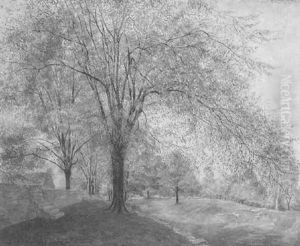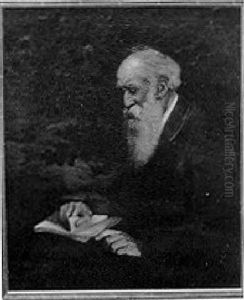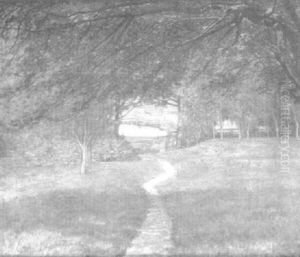John Henry Niemeyer Paintings
John Henry Niemeyer was a German-American artist born on October 4, 1839, in Bremen, Germany. He pursued his passion for art from a young age and began his artistic education in his homeland. Niemeyer's initial training took place in Germany, where he developed a foundation in the traditional European art styles of the mid-19th century. Seeking broader opportunities and inspired by the stories of America, he decided to immigrate to the United States in the late 1850s, a period when many Europeans were moving to America.
Upon arriving in the United States, Niemeyer settled in New York, a burgeoning hub for artists and intellectuals. He continued to develop his skills and was particularly influenced by the Hudson River School, a mid-19th century American art movement embodied by a group of landscape painters who were inspired by romanticism. Their work was characterized by their realistic and detailed portrayal of the American landscape, an element that also found its way into Niemeyer's work.
Niemeyer's career spanned several decades, during which he painted a variety of subjects, including landscapes, marine scenes, portraits, and historical tableaus. His style evolved over time, integrating the romantic qualities of the Hudson River School with his own unique perspective. Niemeyer's paintings often reflected a serene and contemplative view of nature, encapsulating the vastness and beauty of the American scenery.
In addition to his work as a painter, Niemeyer was also an educator. He took a position at the Cooper Union for the Advancement of Science and Art in New York, where he taught for many years, influencing a generation of young artists with his knowledge and passion for art. His dual role as a teacher and a painter helped to establish him as a respected figure in the New York art community of the late 19th and early 20th centuries.
John Henry Niemeyer's contribution to American art continued until his death on February 19, 1932, in New York City. His legacy is preserved through his paintings, which are part of various collections and have been exhibited in numerous galleries and museums. Niemeyer's work is a testament to the transatlantic exchange of artistic ideas in the 19th century and the development of a distinctive American art aesthetic during that period.





